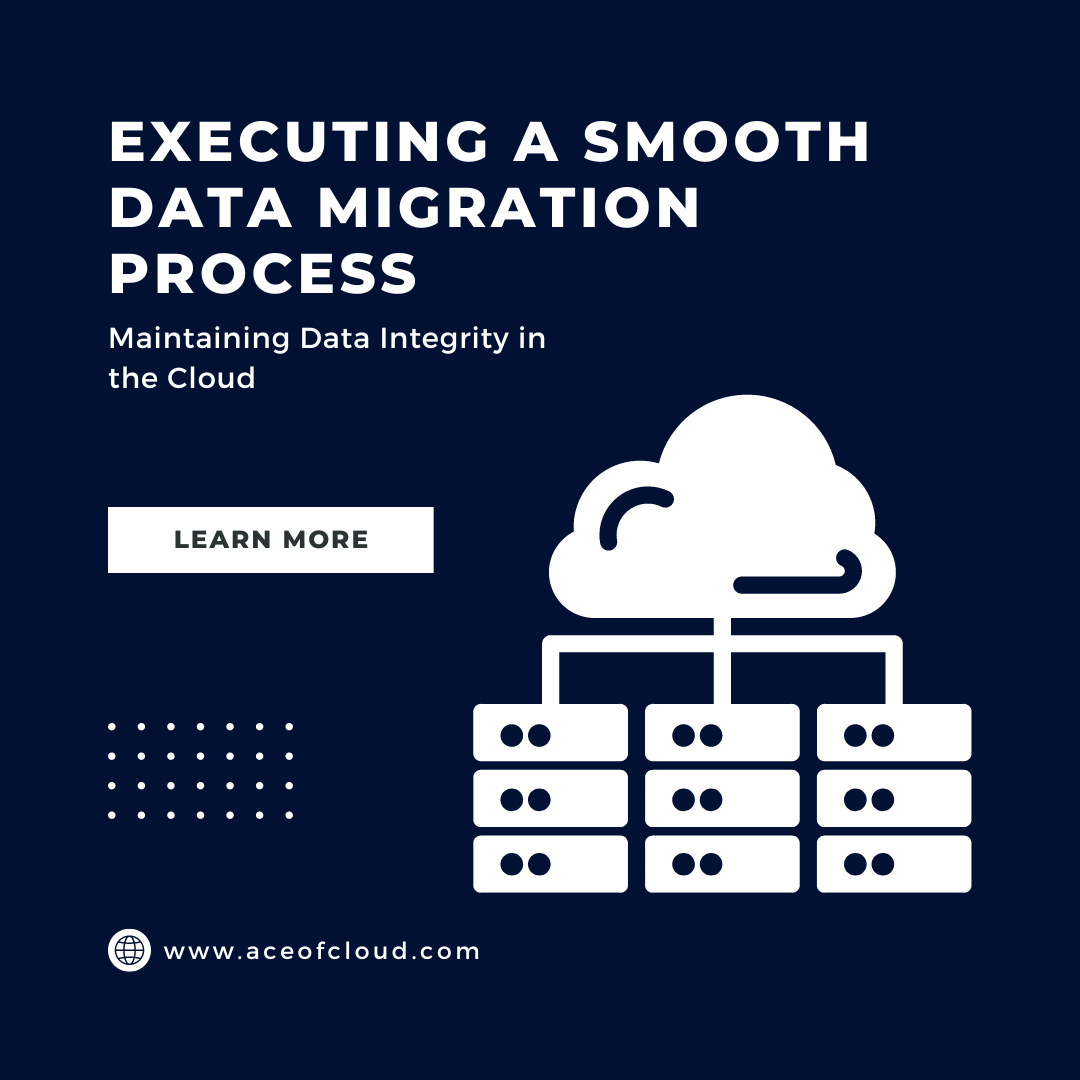Migrating data to the cloud is a complex process that demands meticulous planning and execution. It’s not just about moving data from one place to another; it’s about ensuring that this data remains accurate, secure, and accessible throughout and after the migration. This blog will guide you through the essential steps to execute a smooth data migration and outline best practices for maintaining data integrity in your new cloud environment.
Part 1: Executing a Smooth Data Migration Process 🚀
A successful data migration process is built on careful preparation, execution, and validation. Here’s how to ensure a seamless transition to the cloud:
1. Data Extraction: Preparing Your Data for Transfer
The first step in any migration process is data extraction. This involves retrieving all relevant data from your source systems and preparing it for transfer to the cloud.
Identify Relevant Data:
Ensure that you’re capturing all necessary data, including historical data, current transactions, and any related metadata.
Data Preparation:
Cleanse and format the data to be compatible with the target cloud environment. This may involve converting file formats, restructuring data sets, or resolving any data discrepancies.
Backup:
Before extracting the data, create a full backup of your source system. This serves as a safety net in case any issues arise during migration.
2. Data Transfer: Moving Your Data Securely and Efficiently
Once your data is extracted and prepared, the next step is to transfer it to the cloud. The method you choose will depend on the size and complexity of your data.
Real-Time Streaming:
For high-volume, dynamic data, real-time streaming can be an effective approach. This method transfers data continuously, ensuring that the most up-to-date information is available in the cloud.
Batch Processing:
For less time-sensitive data, batch processing allows you to transfer large amounts of data in scheduled intervals. This can be more efficient for systems with heavy data loads.
Secure Transfer:
Regardless of the method, ensure that data is transferred using secure protocols (e.g., SSL/TLS) to protect it from unauthorized access or corruption during the migration.
3. Data Validation: Ensuring Accuracy After Transfer
Data validation is a critical step in the migration process. After your data has been transferred, it’s essential to verify that everything has been accurately and completely migrated.
Integrity Checks:
Perform checks to ensure that all data has been transferred without any loss or corruption. This may include comparing data counts, checksums, or file sizes between the source and target systems.
Functional Testing:
Test the functionality of the data in the new cloud environment. This involves running key operations to ensure that the data behaves as expected and that applications relying on this data are functioning correctly.
4. Post-Migration Verification: Confirming Data Accessibility and Performance
After the initial validation, conduct post-migration verification to ensure that your data is fully operational in the cloud.
Data Accessibility:
Verify that all users and applications can access the data in the cloud without issues. Check for any permissions or access control problems that might have arisen during the migration.
Performance Testing:
Assess the performance of the data in its new environment. Ensure that data retrieval, processing, and analytics are functioning at optimal speeds and that there are no bottlenecks.
5. Minimizing Downtime: Keeping Your Business Running
Minimizing downtime is crucial for maintaining business continuity during migration. Careful planning can help reduce interruptions to your operations.
Scheduled Migration:
Plan the migration during low-traffic periods to minimize the impact on daily operations. Communicate the schedule to all stakeholders to prepare them for potential disruptions.
Use of Backup Systems:
Implement backup systems to ensure that critical operations can continue even if the primary system is offline during the migration. This might involve temporarily switching to on-premise backups or utilizing redundant cloud services.
By following these steps, you can execute a smooth migration that not only transfers your data effectively but also ensures that your business continues to operate without interruption.
Part 2: Managing Data Integrity and Quality in the Cloud 🌐
Once your data is successfully migrated to the cloud, the focus shifts to maintaining its integrity and quality. Here’s how to ensure your data remains accurate, consistent, and reliable in its new environment:
1. Data Cleansing: Keeping Your Data Clean and Relevant
Data cleansing is an ongoing process that involves regularly removing or correcting inaccurate, outdated, or duplicate data.
Duplicate Removal:
Regularly scan your data for duplicates and remove them to prevent confusion and ensure that your data analytics remain accurate.
Outdated Data:
Identify and archive or delete outdated information that no longer serves a purpose. This keeps your data sets lean and relevant.
Error Correction:
Implement automated tools or manual processes to identify and correct errors in your data, such as incorrect entries or missing information.
2. Validation Processes: Ensuring Ongoing Data Accuracy
Even after migration, it’s essential to continuously validate your data to maintain its accuracy and consistency.
Automated Validation:
Use automated tools to regularly check your data for integrity and consistency issues. These tools can identify discrepancies and alert you to potential problems before they impact your operations.
Manual Audits:
Conduct periodic manual audits of your data to complement automated processes. This provides an additional layer of assurance that your data is accurate and reliable.
3. Quality Monitoring: Keeping an Eye on Data Health
Ongoing monitoring of data quality is crucial for maintaining the integrity of your cloud environment.
Quality Metrics:
Establish key quality metrics, such as data completeness, accuracy, and consistency, and monitor them regularly. This helps you identify trends and address issues proactively.
Alerts and Notifications:
Set up automated alerts to notify you of any data quality issues, such as sudden spikes in errors or missing data. This allows you to address problems before they escalate.
4. Documentation: Maintaining a Record of Data Changes
Thorough documentation of your data management processes is essential for maintaining data integrity and ensuring compliance with regulations.
Process Documentation:
Keep detailed records of your data migration and management processes, including how data is cleansed, validated, and monitored. This documentation serves as a reference for future audits and helps maintain consistency in your data management practices.
Change Logs:
Maintain change logs that track any alterations made to your data post-migration. This includes updates, deletions, or corrections. Change logs are valuable for troubleshooting issues and ensuring transparency in data management.
By implementing these practices, you can maintain high data quality standards in your cloud environment, ensuring that your business operations remain smooth and efficient.
Conclusion
Successfully executing a data migration is just the beginning; maintaining data integrity and quality in the cloud is an ongoing commitment. By following the outlined steps for a smooth migration and adopting best practices for data management, your organization can ensure that its cloud environment remains secure, reliable, and ready to support your business needs. With the right approach, your transition to the cloud will be a seamless and successful endeavor.

